#foodchain
Photo

This kingfisher seems to be in the mood for a little sashimi
#kingfisher#birds#fishing birds#fishing#fish#lake#diving for food#diving birds#nature#foodchain#amazing shots#sashimi#lunchtime#wow
75 notes
·
View notes
Video
youtube
The Animal Food Chain | Education Video for Kids
#youtube#animal#foodchain#pantsbear learning english funlearning educational videoforkids exploring hi
2 notes
·
View notes
Text
What is the Importance of Food Chains and Food Webs?
Explore the intricate relationships within ecosystems with our comprehensive guide to food chains and food webs. Understand how energy flows from producers to consumers and discover the interconnectedness of living organisms in maintaining ecological balance. Enroll now at Tutoroot.
0 notes
Video
youtube
Urgent Warning: They're coming for your FOOD!
0 notes
Text
Cold Chain Logistics - Safeguarding the Integrity of Perishables

In the realm of modern logistics, the Cold Chain stands out as a critical component, ensuring the safe and efficient transport of temperature-sensitive goods. From pharmaceuticals to fresh produce, maintaining a controlled environment throughout the supply chain is essential. As technology continues to advance, and global trade expands, the role of Cold Chain Logistics becomes even more critical in ensuring the integrity of perishable items in an interconnected and dynamic supply chain.
0 notes
Text
Interesting Facts About Honey Bees
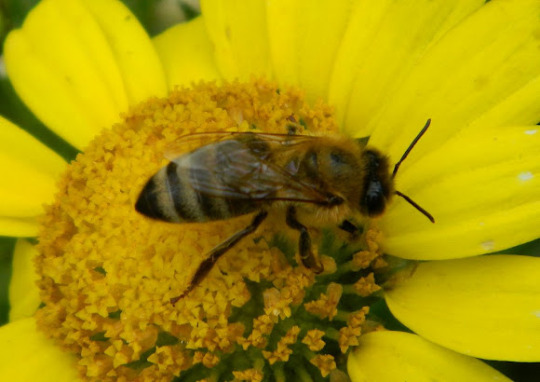
Honeybees are some of the most interesting creatures on Earth. Not only are they essential for the pollination of plants, but they also produce sweet, delicious honey. For centuries, people have used honey bees for pollination and to make honey, and they have a fascinating life cycle. Here are some interesting facts about honey bees.
1. Honey bees have been around for millions of years. They were one of the first insects to be domesticated by humans and are still used today to pollinate crops and create honey.
2. Honey bees have an incredible sense of direction and can fly up to 15 miles per hour.
3. A single bee colony can contain up to 80,000 bees at its peak.
4. Honey bees have an incredible memory. They can remember and recognize different flowers and can travel up to 6 miles away from the hive to find food.
5. Honey bees communicate with each other by performing a “waggle dance.” This dance helps them communicate the location of food sources to other bees. Read More.
1 note
·
View note
Text
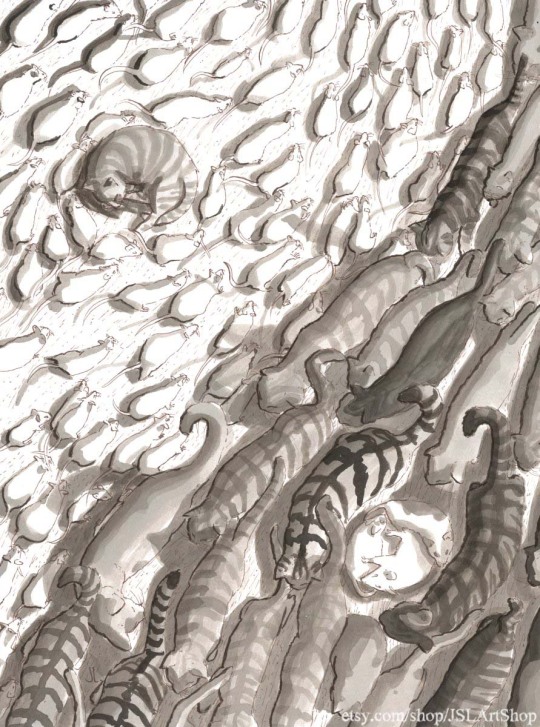
I like using graphic symbols as a composition guide, as I did the taiji or yin-yang symbol here for the two herds of mice and cats respectively, or rather, the mischief of rats and a nuisance of cats ;) Plural names are such fun.
"Cat-Mouse Taiji", drawn in sepia inks on A3 paper, and for sale on Etsy for the small price of 110€ including shipping: https://www.etsy.com/de-en/listing/1076404971/sepia-ink-drawing-of-cats-and-mice-in
#yinyang#cat#mouse#circleoflife#inkdrawing#traditionalart#etsyart#inktober2022#childrensbook#sepiadrawing#pets#a3format#etsysale#inktoberoriginal#fineart#herd#mischiefofrats#nuisanceofcats#forcatladies#foodchain#taiji
0 notes
Text
Bigbizopp burger franchisee blog
Ready to flip your burger business dreams into reality? BigBiz is your trusted ally on this exciting journey. Our blog provides comprehensive resources, from startup essentials to scaling strategies, to help you build a thriving burger business. Join our community of passionate burger entrepreneurs and gain access to invaluable insights and support.
0 notes
Photo

In the jungle we settle down our own issues the beauty of the jungle on in Tanzania 🇹🇿 #safari #animals #foodchain #advanture #ontheroad #lifeofadventure #photography #photographer #photooftheday #happiness #jungle #travel #travelling #hiking #luxurylifestyle #luxury #photographylovers #wildlife #camping (at Serengeti National Park Tanzania) https://www.instagram.com/p/CoWhLVxDw9Y/?igshid=NGJjMDIxMWI=
#safari#animals#foodchain#advanture#ontheroad#lifeofadventure#photography#photographer#photooftheday#happiness#jungle#travel#travelling#hiking#luxurylifestyle#luxury#photographylovers#wildlife#camping
0 notes
Photo
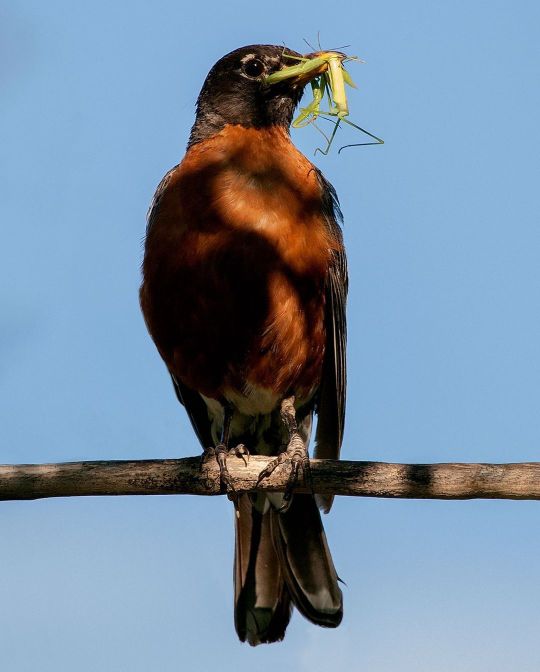
This American Robin snatched a praying mantis and perched on a tree branch to show off its catch. #wildlife #birds #americanrobin #robin #nature #circleoflife #foodchain (at Windsor, Ontario) https://www.instagram.com/p/CmcoVpsPsmE/?igshid=NGJjMDIxMWI=
0 notes
Text
2 Perishable-Shipping Solutions
An inability to do that leads to tremendous waste. The Food and Agriculture Organization (FAO) estimates the global volume of food waste for 2022 will be 1.3 billion tons—30-40% of the total global food supply. Read more 👇
#globalchian#foodchain#supplychain#real time supply chain tracker#food chain supply#freight tracking#containertracking#freighttracking#supply chain visibility
1 note
·
View note
Photo

If you are a Buddhist with a hyper degree in molecular biology and were trying to design a karma free body. You would have to become a fungus, because they are the only blameless members of the food chain because they exist on dead matter. They don't destroy anything. They don't live off living material.
#TerrenceMcKenna#mushrooms#karmafree#molecularbiology#fungus#blameless#eatingdeadthings#foodchain#Buddhist#intelligentdesign#sacredtruths#acrylic#painting#artists on tumblr#artoftheday#dailyartwork#artwork#outsiderart#lowbrowart#kunst#flomm#handpaintedbeercoaster#perspective
1 note
·
View note
Text
Get the Mario Food Chain t-shirts with 20% with purchases of 3 t-shirts with the code "OTOÑO" from this online shop : https://www.latostadora.com/shop/Retro_Gamer/
#retrogamer#vintagelook#vintagetshirt#gamerapparel#foodchain#supermario#retrogaming#oldschool#gamer#gaming
0 notes
Text
What is the Importance of Food Chains and Food Webs?
A food chain is a straightforward sequence demonstrating the transfer of energy and nutrients from one living organism to another. It begins with a primary energy source, usually the sun, and flows through various trophic levels, including producers (plants), consumers (herbivores, carnivores, omnivores), and decomposers. Each step in a food chain represents a different trophic level, and energy is transferred from one level to the next.
Energy Flow in Food Chain
Energy flow in a food chain is a unidirectional process, starting from the sun and moving through various trophic levels. Here’s a detailed explanation of the energy flow process in a food chain:
Primary Source (Sun): The sun is the ultimate source of energy for all ecosystems. Plants, algae, and some bacteria capture this solar energy through photosynthesis, converting it into chemical energy stored in glucose.
Producers (Plants): Producers are the first trophic level. They use the energy from the sun to produce food (glucose) through photosynthesis. This stored energy is then available to herbivores or primary consumers.
Primary Consumers (Herbivores): Herbivores, or primary consumers, feed on producers to obtain energy. For instance, a grasshopper eating grass acquires the energy stored in the grass.
Secondary Consumers (Carnivores and Omnivores): Secondary consumers are organisms that eat primary consumers. For example, a frog that eats a grasshopper gains the energy originally stored in the grass and transferred to the grasshopper.
Tertiary Consumers (Higher-level Carnivores): These are predators that feed on secondary consumers. When a snake consumes a frog, it acts as a tertiary consumer, obtaining energy from the frog, which had previously acquired its energy from a grasshopper.
Quaternary Consumers (Apex Predators): Apex predators, like hawks or eagles, are at the top of the food chain. They have no natural predators and obtain their energy by preying on tertiary consumers.
Decomposers: Decomposers like bacteria and fungi play a crucial role in breaking down dead organisms and organic waste. They recycle nutrients back into the ecosystem, ensuring the continuity of the food chain.
The energy transfer between each trophic level is not 100% efficient. According to the 10% law, only about 10% of the energy from one trophic level is transferred to the next. The remaining 90% is lost as heat, used for metabolic processes, or left undigested. The reduction of energy at each trophic level restricts the length of food chains and results in an energy distribution that forms a pyramid shape.
Types of Food Chains
Food chains can be categorized into two primary types: grazing food chains and detritus food chains. Each type plays a unique role in an ecosystem’s energy flow and nutrient cycling.
Grazing Food Chain
The grazing food chain begins with plants (producers) as the primary source of energy and continues through various levels of consumers.
Producers (Plants): They capture solar energy and convert it into chemical energy through photosynthesis.
Primary Consumers (Herbivores): Organisms like cows, deer, and insects that feed on plants.
Secondary Consumers (Carnivores): Animals like birds, frogs, and small mammals that eat herbivores.
Tertiary Consumers (Higher-level Carnivores): Predators like snakes and foxes that feed on secondary consumers.
Apex Predators: Top predators like eagles, wolves, and sharks.
Detritus Food Chain
The detritus food chain starts with dead organic matter and involves decomposers and detritivores.
Detritus: Dead organic matter, such as fallen leaves, dead animals, and feces.
Decomposers (Bacteria and Fungi): Microorganisms that break down dead matter into simpler substances.
Detritivores (Worms, Insects): Organisms that consume decomposed organic material.
Secondary Consumers (Small Predators): Animals like beetles and small rodents that feed on detritivores.
Higher-level Consumers: Predators that feed on secondary consumers in the detritus chain.
Both types of food chains are essential for ecosystem stability. Grazing food chains are vital for transferring energy from the sun to herbivores and carnivores, while detritus food chains ensure the recycling of nutrients through the breakdown of organic matter.
What is a Food Web?
A food web consists of a complex network of linked food chains within an ecosystem. Unlike a linear food chain, a food web shows multiple pathways through which energy and nutrients flow among various organisms. It demonstrates how different food chains are linked and how species interact with each other.
Food Web Examples
Forest Ecosystem: In a forest, plants are consumed by insects, deer, and rabbits. These herbivores are preyed upon by birds, snakes, and foxes. Birds might also eat insects, while larger predators like wolves prey on foxes and deer, creating a complex web of interactions.
Aquatic Ecosystem: In an aquatic environment, algae and phytoplankton are the primary producers. Small fish consume these producers, and in turn, are eaten by larger fish. These larger fish may be preyed upon by birds or marine mammals, forming an intricate food web.
Importance of Food Chains and Food Webs
Food chains and food webs are fundamental for the survival and stability of ecosystems. They play several crucial roles:
Energy Transfer: Food chains and webs facilitate the transfer of energy from the sun to various organisms, ensuring that energy flows through the ecosystem.
Nutrient Cycling: Decomposers in food chains and webs break down dead organisms and waste, recycling nutrients back into the soil, which plants use for growth.
Population Control: Predation in food chains helps regulate the population of different species, preventing overpopulation and maintaining balance.
Biodiversity Maintenance: The interdependence of species in food webs promotes biodiversity. Ecosystems with high biodiversity are better able to withstand environmental changes and disturbances.
Ecosystem Stability: Food webs create a buffer against the loss of a species. If one species declines, others can fill its ecological role, ensuring ecosystem stability.
Evolutionary Pressure: Predation and competition in food chains exert evolutionary pressure, driving species to adapt and evolve over time.
Understanding food chains and food webs is essential for appreciating the complexity of ecosystems. These concepts illustrate how energy and nutrients flow through different trophic levels, highlighting the interdependence of organisms. By studying food chains and webs, we can better grasp the importance of biodiversity and the delicate balance required to maintain healthy ecosystems.
Looking for more clear and detailed explanations like this? Visit the Tutoroot Blog for simplified learning experiences across various subjects. Boost your understanding with Tutoroot’s online tutoring services. Start your learning journey today with Tutoroot’s Biology Online Tuition by booking a FREE DEMO session now.
0 notes
Text
DIRK: So yeah it’s way hotter out here than I was expect- woah tinnitus attack
#submission#homestuck#incorrect homestuck quotes#Dirk Strider#Mod Nepeta#//L#bottom of the foodchain
61 notes
·
View notes
Note
I love the new comic so much! Not only is it breathtaking on its own, but it adds delicious moral complexity to the collection incomplete verse. The Archivists eliminating all the titans is still very much not a good thing, but now we can see that the titans were far from paragons of virtue. Subjugating and extracting tribute from the populace. The titans may have considered themselves benevolent overlords, but overlords all the same.
Just this one comic gives a window into why the locals might have been down with joining the Archivists hunting the titans down. Conflict is so much more interesting when neither side is fully right or wrong and I'm thrilled to see this will be so much more complicated than "Archivists bad, Titans good,".
super happy you enjoyed it:P it took aaaa while to finish
But yeah, something I found interesting is that with creatures like Titans living among witches, there is a clear power imbalance between them, something that has many ways to go about. Especially considering how differently they are perceived by two groups of witches. On the Boiling Isles, they were seen as a source of all that's good amazing kind creatures of immense power, while Titan Trappers talked about them more like monsters. I like the idea there were societies or cults built around differnt titans, and the differences between how everyone interacted were more based on the personalities of those involved - leading to diffrent views on titans by the groups.
And I know a cult focused on killing titans isn't going to be a source of reliable information on the titans. This is more about how they might have been perceived to make space for a third party to convince a group that murder isn't such a bad idea (it is, please don't)
Another thing is that all characters are people, not in the "humans" sense but there arent really levels of sentience. All characters have their own minds, whether they are titans, archivists, witches, etc. It's just different circumstances and abilities, and if the stakes were smaller and everyone was forced to sit down and reflect on what they were doing, it might have ended up much less deadly
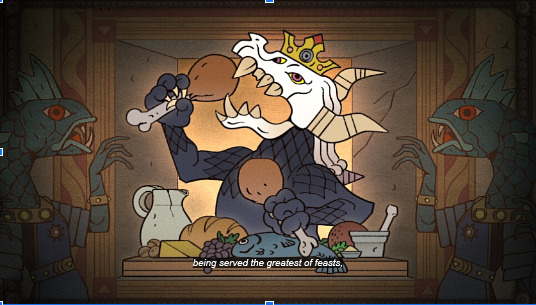
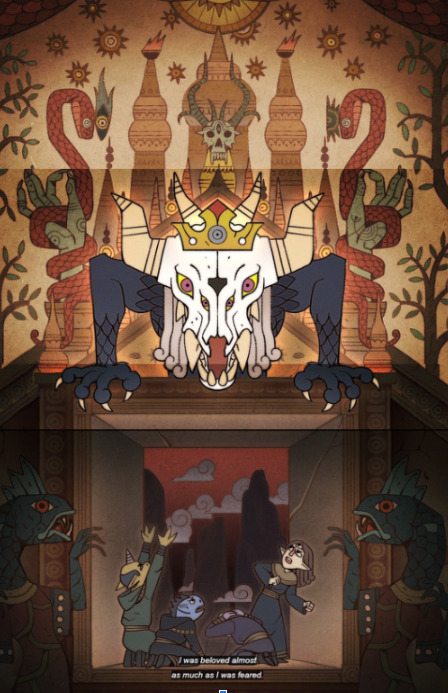
The screens are from King's tales of his past that were very much kids imagination, but I like the idea that somewhere in Kings nursery those depitons were drawn showing a diffrent titan and it fueled his story. Debatable if it was an accurate and not a demonised depition though
#any time I think about how the titans foodchain worked I think of Livyatans and thats leaves some fun implications#If any side side in Collection Incomplate made a reddit AITA about their situation theyd probably get ESH#except for the kids#they just found themselves in a very bad place#ask#the owl house#owl house#toh#toh archivists#titan trappers#toh titans#toh titan trappers#collection incomplete au
59 notes
·
View notes